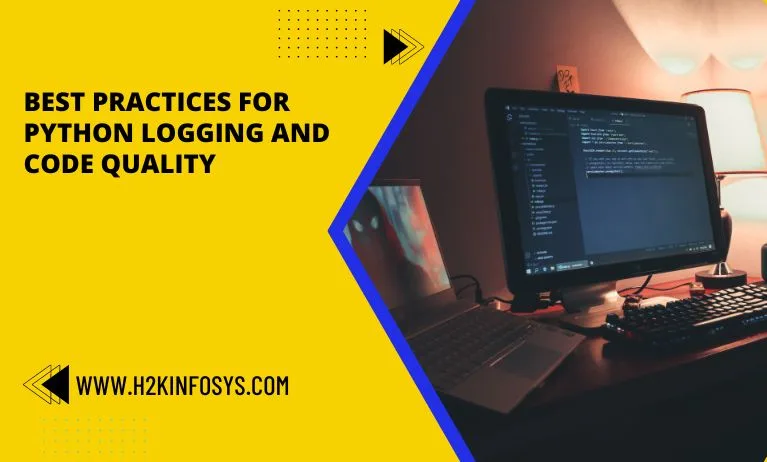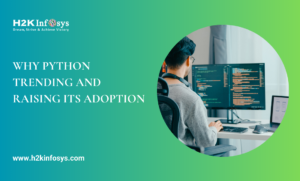Writing algorithms, usually referred to as instructions, for a computer to perform a certain task, is the art of coding. Programming languages are used by developers to connect with computers.
Python Programming languages, like natural languages like English, Russian, or Quechua, have a set of syntactic and semantic principles that serve as the foundation for communication. Although programming languages are more complicated, adaptable, and dynamic than natural languages, the same qualities also apply to them, albeit to a lesser level.
Even the simplest algorithm can be written in a variety of ways. While some flexibility in the development of code is desirable, it can hinder productivity and good communication, especially when several individuals are contributing to it.
So while writing code, readability is a crucial factor. The majority of programming languages have created coding standards to make sure that developers are using the same terminology. These documents offer recommendations and best practices for writing understandable, scalable, and maintainable code. Enrolling in the online Python certification course will teach you more about Python.
Python best practices for code quality.
Writing legible, well-structured code can have a positive impact and advance your career. Coding is actually an art, despite the fact that for novices it could look like a mechanical and complicated procedure.
You can use a variety of recommendations to improve the quality of your Python code. A few of the most important are listed here.
The tyranny of indentation
The spaces at the start of a code line are known as indentation. Indentation is a requirement in Python, unlike other programming languages, where it is just used to improve readability. A block of code in Python is opened via indentation.
Maximum line length
No line shall be larger than 79 characters, according to PEP 8. Shorter lines are simpler to read, thus this makes sense. Additionally, this length enables you to open many files simultaneously.
Blank lines
Add two blank lines around the declarations of top-level functions and classes. Classes contain a single blank line around each method definition. Use extra blank lines carefully to divide sets of related functions. Finally, insert (sparingly) blank lines to denote logical portions in functions.
Utilize autoformatters and linters
Coding proficiency takes time. Coding may be difficult and time-consuming if you have to pay attention to every little detail. Fortunately, tools like linters and formatters can assist us in ensuring code quality.
Linters analyze source code statically and look for semantic inconsistencies. To make sure that your code appears consistently across different files or projects, formatters are programs that attempt to rearrange your code’s spacing, line length, argument positioning, and other factors. There are many different linters and formatters available for Python.
Remember the fundamentals
While some of the aforementioned criteria are simple, coding frequently depends on taste and intuition. Some of the guiding principles of Python should be familiar to you if you want to become a coder. The Zen of Python, which is addressed in a different essay, is a wonderful illustration of similar ideas.
Python logging best practices
Logging is a technique for monitoring events that take place when some software is in use. Logging becomes a crucial approach for designing, debugging, operating, and tracking performance, particularly as applications increase in size and complexity.
Since version 2.3, the logging module has been a part of Python’s Standard Library to deal with logging procedures. For the majority of Python developers, the module is the go-to package when it comes to logging. In PEP 282, it is extensively detailed.
Logging is conceptually comparable to a Print function. A print function, however, is deficient in many details that a developer could find helpful. However, logging can record the timestamps and line number of the error. Additionally, it can log any information or faults to files, sockets, etc
Not all log messages are the same. The module does, in fact, offer a variety of logging levels based on the importance of the message. It goes like this:
NOTSET (0): All messages will be logged if this value is present.
Debug (10): Helpful for identifying code problems.
Information (20): It may serve as a declaration that the code is error-free. The development of training a machine learning model is a good example of how information-level logging can be used.
Warning (30): An indication of a potential future issue. For instance, a low-ram alert or a warning that a module may be discontinued in the future.
Error (40): A significant programming error, such as a syntactic error, an out-of-memory error, or an exception.
Critical (50): A mistake that could cause the application to stop working or to end suddenly.
Use logs rather than printouts
As we previously stated, logs offer information in a way similar to how print functions do. However, logs are far more effective since they may offer more specific information.
Although it may be tempting to use the Print function, logs are usually the safest choice, especially if you are not familiar with logging processes. They can handle complex applications and scale better.
There is plenty of documentation and guidance online.
Use the logging module
For the majority of Python developers, this module is the default choice. This indicates that the module is supported by a sizable community and is well-maintained, so any questions you may have will always have an answer.
Pick your logging level carefully
The logging module has six distinct message levels. Each of them is made with a certain objective in mind. It will be simpler for you and the users to comprehend what is happening in your code if you adhere to them more.
When logging, use timestamps
Logs have a crucial feature that print functions lack: this. Knowing when an issue occurred is just as crucial as knowing where it first emerged. Your best allies in these circumstances are timestamps. When writing timestamps in the ISO-8601 format, be sure to adhere to the standard format.
Clean out the logging bin
To avoid memory space difficulties, use RotatingFileHandler classes like the TimedRotatingFileHandler rather than FileHandler when you want to archive, compress, or remove old log files. Once a size restriction or a time constraint is met, these classes will clear the area.
Conclusion
It is important that you apply these practices to your Python code to get the best out of them. Check out the online Python training to learn more.


























